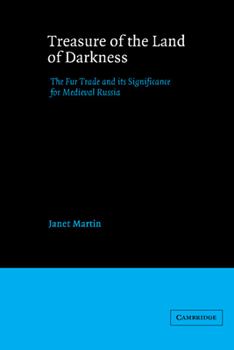Treasure of the Land of Darkness: The Fur Trade and Its Significance for Medieval Russia
Select Format
Select Condition 
Book Overview
Treasure of the Land of Darkness traces the traffic in fur from the lands of the north, through the major trade centres of medieval Russia to the consumer markets of the world, stretching from western Europe to China. Professor Martin reconstructs the fur-trade network of each centre (including Kiev, Novgorod and Moscow) and examines the changes they experienced. She shows how aggressive principalities enhanced their political authority through manipulation of such factors as fur resources and trade routes: thus the mid-sixteenth-century supremacy of Muscovy was based upon both political advantage and monopolisation of the networks of the fur trade. Quantitative analysis of the available data substantiates this conclusion: control over the trade of those 'lands of darkness' mentioned in contemporary Islamic texts was of fundamental importance to the political development of medieval Russia.
Format:Paperback
Language:English
ISBN:052154811X
ISBN13:9780521548113
Release Date:August 2004
Publisher:Cambridge University Press
Length:288 Pages
Weight:0.80 lbs.
Dimensions:0.7" x 6.0" x 9.0"
Customer Reviews
1 rating
Excellent survey of Northern Russia before 1600
Published by Thriftbooks.com User , 16 years ago
Dwspite its seemingly limited subject, this is an excellent survey of the economic, and therefore political, history and geography of northern Russia before 1600. The author claims that Bolgar blocked Rus trade in the lower and middle Volga, a 'fact' that does not seen to have reached the standard Viking historians. There is no adequate discussion of the relation between the fur trade and other branches of trade, especially the slave trade, which many authors consider more inportant. What we need now is a similar study of the area south of Moscow. I have not seen this cited in other books, which is odd, since it appears to be an excellent survey.






